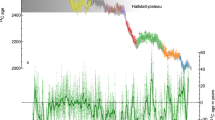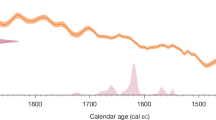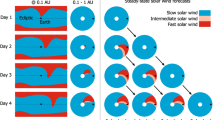Abstract
A SYSTEM of dividing the year into 16 periods, each denned by certain solar declination values having numerically equal positive and negative magnitudes, has been discussed by me in an earlier paper1. Research has been continued on the selection of the most suitable declination values and the corresponding dates by examination of ephemerides for the Sun during 1952–64 (ref. 2), resulting in slight modifications of the original selections. Such a system would have many advantages in solar engineering research, where bright Sun conditions are of predominant importance, the computation of solar angles of incidence on variously inclined surfaces being greatly facilitated by the limitation to the five standard numerical declination values shown in the fourth column of Table 1.
This is a preview of subscription content, access via your institution
Access options
Subscribe to this journal
Receive 51 print issues and online access
$199.00 per year
only $3.90 per issue
Buy this article
- Purchase on SpringerLink
- Instant access to full article PDF
Prices may be subject to local taxes which are calculated during checkout
Similar content being viewed by others
References
C.N.R.S. Coll. Intern., 23 (1958).
Star Almanac for Land Surveyors (H.M.S.O.).
Author information
Authors and Affiliations
Rights and permissions
About this article
Cite this article
HEYWOOD, H. Standard Date Periods with Declination Limits. Nature 204, 768 (1964). https://doi.org/10.1038/204768a0
Issue date:
DOI: https://doi.org/10.1038/204768a0



